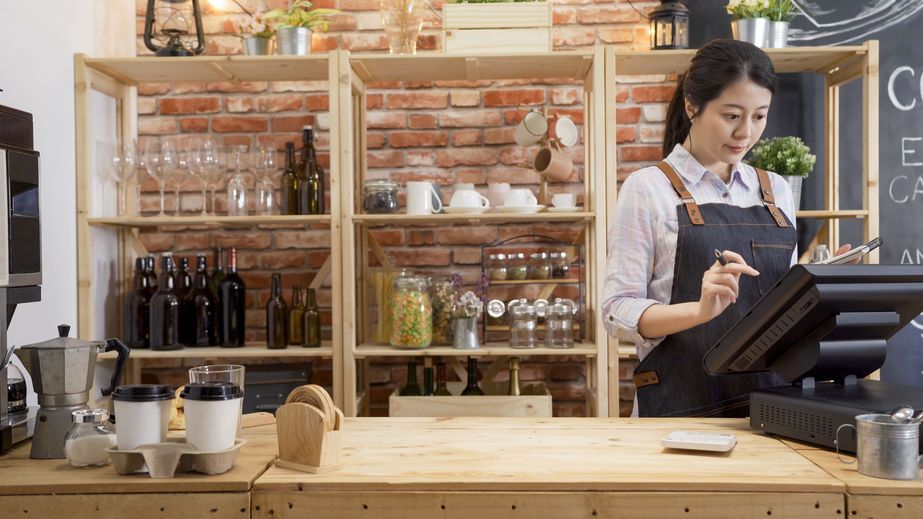How to Get Lower Fees from Your Merchant Solutions Provider
Fees matter. In the earliest days of your business, when you were doing low sales volume, and your top priority was just getting to the customer any way you could, you may have put transaction fees low on your list of priorities. After all, what’s a percent here or ten or twenty cents there? But now that your business and your sales volume have matured, paying even a fraction of a percent more than you need to on each transaction has the potential to siphon thousands of dollars from your business each year. As fees add up with an increase in volume, it’s important to work with your merchant solutions provider to find ways to lower your fees.
So, how do you ensure your transaction fees aren’t costing you money needlessly? To be clear, you can negotiate with your merchant solutions provider, especially if your business is processing a high volume of sales. But, there are other ways you can access lower fees, even if your processor isn’t in the negotiating mood or your sales volume isn’t large enough to give you leverage. The following are four of the simplest and most effective, and each can help you unlock the best possible rates to ensure more money stays in your pockets.
1) Ditch the Third-Party Processor
Third-party processors like PayPal and Square are popular for one reason and one reason only: they’re extremely easy to work with. Setting up a PayPal account can be done in a matter of minutes and, with very little effort, you’re up and running. But that kind of convenience isn’t free. The ease of signing up with third-party merchant solutions providers means each sign-up is riskier for them, and they offset that risk by charging higher fees.
If you’re using a third-party processor like PayPal for your merchant solutions, it’s likely that you’re paying significantly higher prices, both on the percentage and flat components of your fees, than you would be with a traditional merchant account. While getting set up with your own MID and account is a more involved process, going through it is one of the best ways to lower your fees.
2) Minimize the Risk Your Business Represents
As mentioned above, higher risk equals higher fees, and that doesn’t just apply to third-party processors; it’s universal. While your fees will be lower with a traditional merchant account, they’ll still be set based on the risk your business represents. Therefore, a surefire way to lower your fees is to reduce your risk of credit card fraud and increase your transaction security.
There are some extremely simple ways to reduce your fraud risk. In-store, ensuring your payment hardware is up to date is one. Disabling tap payments that don’t require a pin is another. Online, you can ensure you’re using all the tools at your disposal to shut out fraudsters. Something as simple as not requiring a CVV when taking a payment could cause a spike in your fees. Require security codes and zip codes on every single transaction, and to be even safer, enable additional authentication like Verified by Visa or Mastercard SecureCode.
3) Make Sure the Processor Has the Right Information
Because the merchant account application process is so thorough, it can be easy to rush through it. But rushing leads to mistakes, and when it comes to payment processing, mistakes are always costly. Messing up on an application obviously has the potential to result in a rejection, but getting the details wrong can also hurt your business during the underwriting process, resulting in higher fees.
The obvious solution is to ensure that the initial application process is treated with great care so the information provided is as accurate as possible. But, if you have reason to believe you may have been less than careful on your application, or the information about your business and operations has materially changed, make sure to let your merchant solutions partner know. You may be able to unlock better rates just by correcting a single piece of bad information.
4) Switch to an Interchange-Plus Pricing Model
Merchant accounts offer lower fees than third-party processors, but not all merchant account providers price equally. There are three main types of pricing model; flat rate, tiered rate, and interchange-plus. Flat rate pricing charges one fee no matter the industry or payment method, and it’s always the highest rate possible. Tiered pricing breaks payments into multiple tiers, but those tiers are still large and aggregated, so they still end up costing more than they have to.
Interchange-plus pricing – the type offered by leading merchant solutions provider BAMS – treats each transaction individually and dynamically tailors the fee based on the actual interchange rate – the base rate charged by the banks themselves. The result is that merchants always pay the lowest fee possible for each transaction, rather than the highest. Since interchange rates are published publicly, interchange-plus pricing is also the most transparent model available. Unsurprisingly, one of the most effective ways to reduce your transaction fees is to switch to a provider that offers interchange-plus pricing.
To find out more about how the BAMS interchange-plus pricing model can slash your merchant fees to industry lows – guaranteed – get started with your free comprehensive five-point price comparison today.




